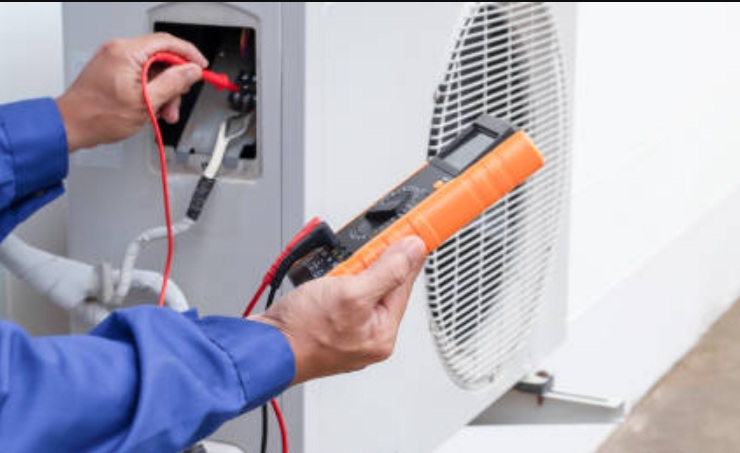Blog
Introduction
Maintaining good indoor air quality is vital for a healthy living environment. Poor air quality can lead to various health problems, affecting both short-term comfort and long-term well-being. Homes often harbor pollutants such as dust, mold, and allergens, which can aggravate respiratory issues and other health conditions.
A dehumidifier can play a crucial role in enhancing indoor air quality by controlling moisture levels and reducing these harmful substances.
Understanding The Importance Of Indoor Air Quality
Common Indoor Air Pollutants
Numerous pollutants can affect indoor air quality. Common indoor air pollutants include dust, pet dander, mold spores, and volatile organic compounds (VOCs). Dust consists of small particles that can carry allergens and bacteria. Pet dander, another frequent contaminant, is made up of tiny flakes of skin shed by animals. Mold spores thrive in damp conditions and can enter the air, leading to respiratory issues. VOCs are chemicals found in household products like paints, cleaners, and air fresheners, and can contribute to indoor pollution.
Recognizing these pollutants is the first step in addressing indoor air quality issues. Each source has different characteristics and methods of control. By understanding what contaminants are in your home, you can take targeted actions to reduce their presence and improve the air you breathe.
Health Implications Of Poor Air Quality
Poor indoor air quality can have significant health implications. Short-term effects may include headaches, dizziness, and irritation of the eyes, nose, or throat. These symptoms can be particularly troublesome for individuals with allergies or asthma, as pollutants can trigger or worsen their conditions. Long-term exposure to poor air quality can lead to more severe health problems, such as chronic respiratory diseases, heart disease, and even some cancers.
Both children and elderly individuals are more vulnerable to the adverse effects of indoor air pollutants. Keeping indoor air quality at optimal levels is essential for protecting the health and well-being of your household.
How Dehumidifiers Improve Indoor Air Quality?
Reducing Mold And Mildew
Mold and mildew thrive in moist environments, making homes with high humidity ideal breeding grounds. Excessive moisture can cause mold to grow on walls, ceilings, and other surfaces. Mold is not just unsightly; it can release spores into the air, contributing to indoor air pollution. These spores can cause allergic reactions and respiratory issues.
Using a dehumidifier helps to remove excess moisture from the air, creating a less favorable environment for mold growth. By keeping humidity levels below 60%, you can significantly reduce the chances of mold and mildew developing in your home. This makes the air cleaner and healthier to breathe.
Preventing Dust Mites And Allergens
Dust mites are microscopic pests that thrive in humid conditions. They are a common cause of allergic reactions and can aggravate asthma symptoms. High humidity levels contribute to their proliferation, making it essential to keep moisture in check. A dehumidifier works by extracting moisture from the air, making your home less hospitable to these allergens.
In addition to dust mites, other allergens like pollens and pet dander can be more prevalent in humid conditions. By using a dehumidifier, you can lower the overall humidity level in your home, reducing the concentration of these allergens. This leads to improved indoor air quality and a healthier living environment for you and your family.
Selecting The Right Dehumidifier For Your Home
Different Types Of Dehumidifiers
Choosing the right dehumidifier is essential for improving indoor air quality. There are several types of dehumidifiers, each suited to different needs:
- Refrigerant Dehumidifiers: These are the most common and use a cooling coil to condense moisture from the air. Ideal for most household settings.
- Desiccant Dehumidifiers: These use a moisture-absorbing material to remove humidity. They work well in cooler environments but are less efficient in warm conditions.
- Whole-House Dehumidifiers: Integrated into your HVAC system, these dehumidifiers cover your entire home, providing consistent humidity control. They are suitable for larger spaces.
Selecting the right type depends on your specific needs, the size of the area, and the typical humidity levels.
Key Features To Look For
When selecting a dehumidifier, consider the following features for optimal performance:
- Capacity: Measured in pints per day, capacity indicates how much moisture the dehumidifier can remove. Choose a capacity that matches the size of the space and humidity level.
- Energy Efficiency: Look for models with energy-efficient ratings to save on electricity costs.
- Humidistat: This feature allows you to set and maintain a desired humidity level.
- Auto-Defrost: Prevents the coils from freezing in cooler environments, ensuring continuous operation.
- Portability: Wheels and handles make it easier to move the dehumidifier from room to room.
- Ease of Maintenance: Easy-to-clean filters and accessible water tanks simplify regular upkeep.
Maintenance Tips For Optimal Performance
Regular Cleaning And Filter Replacement
To keep your dehumidifier working efficiently and improve indoor air quality, follow these maintenance tips:
- Clean the Water Tank: Empty and clean the water tank every few days to prevent mold and bacteria.
- Replace or Clean Filters: Check the filters monthly. Clean washable filters and replace disposable ones as recommended by the manufacturer.
- Inspect Coils and External Surfaces: Ensure the coils and external surfaces are free from dust and debris. Use a soft cloth to wipe them down.
Proper Placement And Usage Guidelines
Correct placement and usage can enhance the efficiency of your dehumidifier:
- Choose the Right Location: Position the dehumidifier in the most humid area of the home, ideally near the center of the room. Ensure there are no obstructions around the unit.
- Keep Doors and Windows Closed: To maintain optimal humidity levels, close doors and windows when the dehumidifier is running. This prevents outside air from affecting the indoor environment.
- Set the Right Humidity Level: Use the humidistat to set a comfortable humidity level.
Conclusion
Enhancing indoor air quality with a dehumidifier is a smart investment for a healthier living environment. By understanding common indoor air pollutants and their health implications, you can take proactive steps to improve air quality. Dehumidifiers play a crucial role in reducing mold, mildew, dust mites, and other allergens by controlling humidity levels.
Our professionals at McWilliams Heating, Cooling and Plumbing are ready to assist you with selecting, installing, and maintaining the perfect dehumidifier for your home. Contact us today to improve your indoor air quality in Longview and enjoy a healthier home environment!
Share This :
McWilliams Heating, Cooling and Plumbing
Table of Contents
Discover New Blog Posts
Understanding the role of an HVAC contractor is key to making informed decisions about your home’s heating and cooling needs. HVAC contractors are specialized professionals […]
Air conditioning systems are essential for maintaining a comfortable living environment, especially. The Texas heat can be relentless, making a well-functioning AC unit important for […]
Heat pumps are critical components of modern heating and cooling systems. When they malfunction, it can disrupt your home’s comfort and efficiency. Understanding how our […]








